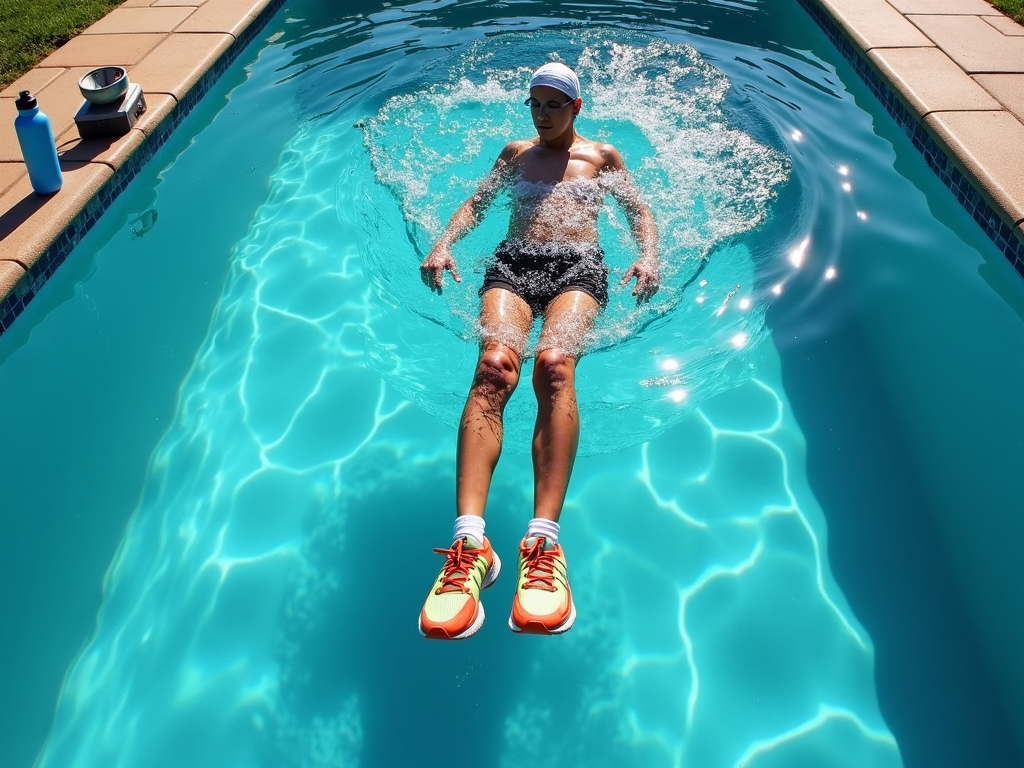Running is a fantastic way to stay fit, but it can also lead to injuries if you're not careful. In this guide, we'll explore common running injuries, how to prevent them, and what to do if you get injured. Whether you're a beginner or an experienced runner, these tips will help you stay on track.
Understanding Common Running Injuries
Running injuries can range from minor annoyances to serious conditions that require medical attention. Some of the most common injuries include:
- Shin Splints: Pain along the inner edge of the shinbone, often caused by overuse or improper footwear.
- Runner's Knee: Pain around the kneecap, usually due to overuse, muscle imbalances, or improper running form.
- Achilles Tendinitis: Inflammation of the Achilles tendon, often from increasing mileage too quickly.
- Plantar Fasciitis: Pain in the heel or bottom of the foot, commonly caused by tight calf muscles or poor arch support.
Understanding these injuries is the first step to preventing and treating them.

Prevention Strategies
Preventing running injuries is much easier than treating them. Here are some key strategies to keep you injury-free:
- Warm Up Properly: Always start your run with a dynamic warm-up to prepare your muscles and joints.
- Wear the Right Shoes: Invest in running shoes that fit well and provide adequate support for your foot type.
- Increase Mileage Gradually: Follow the 10% rule: don't increase your weekly mileage by more than 10% to avoid overuse injuries.
- Cross-Train: Incorporate other forms of exercise, like swimming or cycling, to reduce the impact on your joints.
- Listen to Your Body: If you feel pain, don't push through it. Rest and recover to prevent minor issues from becoming major injuries.
I learned the importance of warming up the hard way. When I first started running, I often skipped this step and ended up with shin splints. Now, I never miss a warm-up, and it has made a huge difference.

Treatment and Recovery
If you do get injured, it's crucial to address it promptly. Here's what you can do:
- RICE Method: Rest, Ice, Compression, and Elevation can help reduce pain and swelling for many injuries.
- See a Doctor: If the pain persists or is severe, consult a healthcare professional for a proper diagnosis and treatment plan.
- Rehabilitation Exercises: Once the acute phase is over, specific exercises can help strengthen the injured area and prevent recurrence.
For example, if you have Achilles tendinitis, calf raises can strengthen the tendon. For runner's knee, exercises that target the quadriceps and hamstrings can be beneficial.

Staying Motivated During Recovery
Recovering from an injury can be mentally challenging. Here are some tips to stay positive:
- Find Alternative Exercises: Activities like swimming, cycling, or yoga can keep you active without aggravating your injury.
- Set Small Goals: Focus on short-term achievements, like completing a certain number of rehab exercises each day.
- Connect with Others: Join online running communities or local groups to share experiences and get support.
When I was recovering from a stress fracture, I found that swimming helped me maintain my fitness and sanity. Plus, connecting with other runners online kept me motivated and reminded me that I wasn't alone.

Top 10 Tips for Beginner Runners
If you're new to running, here are some essential tips to get you started on the right foot:
- Start with a Walk-Run Program: Gradually increase your running time to build endurance safely.
- Invest in Good Running Shoes: Proper footwear can prevent many common injuries.
- Set Achievable Goals: Start with small milestones, like running for 10 minutes without stopping.
- Listen to Your Body: Rest if you feel pain or fatigue.
- Stay Hydrated: Drink water before, during, and after your runs.
- Warm Up and Cool Down: Always prepare your body for exercise and help it recover afterward.
- Find a Running Buddy: Running with a friend can make it more enjoyable and keep you accountable.
- Track Your Progress: Use a running app or journal to see how far you've come.
- Mix Up Your Routes: Explore different paths to keep things interesting.
- Have Fun: Remember why you started running and enjoy the journey.

Summer Fitness Challenges and 5K Runs
Summer is a great time to set new fitness goals, and participating in a 5K run can be an exciting challenge. Many communities host 5K races during the summer, which are perfect for runners of all levels. Whether you're aiming to complete your first 5K or beat your personal best, these events offer a fun and supportive atmosphere.
Training for a 5K can also help you stay motivated and give you a sense of accomplishment. Plus, running in the summer allows you to enjoy the outdoors and soak up some vitamin D.

Conclusion
Running injuries are common, but with the right knowledge and strategies, you can prevent and overcome them. Remember to warm up, wear proper shoes, listen to your body, and seek help when needed. Stay motivated during recovery by finding alternative exercises and connecting with other runners. Whether you're a beginner or an experienced runner, these tips will help you enjoy a safe and fulfilling running journey.
Discuss Here